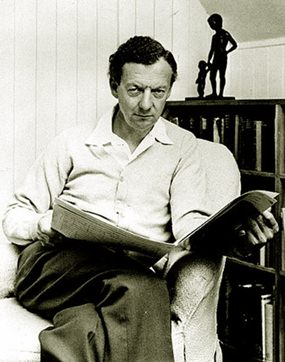“Recently there was given a performance of the (new) overture…and all impartial musicians and music lovers were in perfect agreement that never was anything as incoherent, shrill, chaotic and ear-splitting produced in music. The most piercing dissonances clash in a really atrocious harmony and a few puny ideas only increase the disagreeable and deafening effect.”
This scathing review was written by the German music critic and dramatist August von Kotzebue and was published in a distinguished Viennese newspaper. It sounds as though the disgruntled writer is describing some challenging contemporary work from the early 21st century. But he’s actually describing Beethoven’s overture to the new opera Fidelio. The date was September 1806. It’s difficult for us to understand why August von Kotzebue got so frothed up about it. By today’s standards, the music sounds relatively tame and contains nothing that you or I would describe as “ear-splitting” let alone “piercing dissonances”.
 Benjamin Britten in 1968. (Photo: Hans Wild)
Benjamin Britten in 1968. (Photo: Hans Wild)
In spite of this harsh criticism, the overture to Fidelio still remains a standard work in the concert repertoire over two hundred years later. But you know, what was once considered avant-garde or even downright outrageous can often become perfectly acceptable in a later age. Perhaps this reveals more about society and human nature than it does about art and music.
Anyone who learns the guitar at school soon encounters basic chords like D7 and G7. They’re known, not surprisingly, as seventh chords and they can be found in almost any piece of western music written after 1650. The most common variety is the dominant seventh and it contains a musical entity known as the tritone. This is the sound produced if you play (for example) a C and an F sharp at the same time. It sounds innocent enough today, but it was once considered highly discordant.
It’s thought that during the Middle Ages the tritone was regarded as symbolising the devil and was forbidden by theorists. In church music the tritone was conspicuously avoided for several hundred years. By the eighteenth century though, it had been absorbed into conventional musical styles and was no longer considered demonic. A storm in a tea-cup, you might say.
The idea of expressing the sound of a storm in music goes back a good many years, but it wasn’t until the nineteenth century – when larger orchestras began to develop – that more and more composers started emulating the sounds of nature in their music. Beethoven evoked a thunderstorm in his Pastoral Symphony and Berlioz did much the same thing in his opera The Trojans. Both Tchaikovsky and Sibelius wrote stormy overtures entitled The Tempest derived from Shakespeare’s play of the same name.
Benjamin Britten (1913-1976): Four Sea Interludes. BBC Symphony Orchestra cond. Sakari Oramo (Duration: 16:35, Video: 720p HD)
If Britten had followed in his father’s footsteps, he would have become a dentist. Instead, he became the central figure of twentieth-century British classical music. He was born in the fishing port of Lowestoft in Suffolk and remained close to the sea all his life.
In his first opera Peter Grimes (1945), the music seems to evoke the bleak seas and skies of the eastern coast of England. The Four Sea Interludes come from the orchestral interludes in the opera and oddly enough, this work has become more popular than the opera itself. From the opening moments, you can sense the cold North Sea in the early hours of the morning. But even during the haunting flute melodies, there’s a brooding, uncomfortable sense of foreboding. The sea dominates the music but you’ll have to wait until the last movement (at 12:09) for the storm. And what a storm it is! It’s a ferocious tempest with endless explosions of thunder, a crashing sea and a fearsome wind shrieking through the ship’s rigging.
Thomas Adès (b. 1971): Overture “The Tempest” Op. 22a. The Chamber Orchestra of Europe cond. Thomas Adès (Duration: 04:48, Video: 480p)
If Britten’s storm is a Force 9 gale, this one is a Force 12 hurricane. Thomas Adès was born in London and has a formidable list of works to his credit including two operas. The overture is from his opera The Tempest based of course, on the Shakespeare play and in the overture, Adès creates a storm of Biblical proportions.
Compared to this mind-shattering tempest, the thunder-storm that appears in Beethoven’s Pastoral Symphony is more like a summer shower. Adès pushes dissonance pretty well to the limits in this exciting work but brings it to a satisfying and peaceful conclusion. One cannot help wondering what poor old August von Kotzebue, who found Beethoven so difficult to stomach, would have made of it all. He would have probably staggered out of the concert hall with his ears bleeding.




